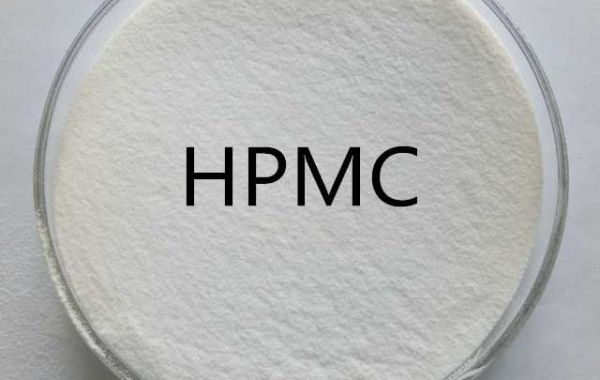Hydroxypropyl Methylcellulose (HPMC) is a chemically modified cellulose ether derived from natural cellulose, primarily sourced from wood pulp or cotton linters. It is produced through a series of chemical reactions that introduce hydroxypropyl and methoxy groups into the cellulose molecule. This modification imparts unique properties to HPMC, making it highly versatile and valuable in various applications across multiple industries.
Chemical Properties
- Chemical Formula: The exact chemical formula varies based on the degree of substitution (DS) and molar substitution (MS), but a common representation is (C_6H_7O_2(OH)_x(OCH_3)_y(OCH_2CHOHCH_3)_z)_n.
- Appearance: White to off-white, free-flowing powder.
- Solubility: Soluble in cold and hot water, forming a colloidal solution. Insoluble in most organic solvents.
- Viscosity: Available in various grades, offering a wide range of viscosities tailored to specific applications.
- pH: Typically neutral to slightly alkaline (pH 5.0-8.0 in a 1% solution).
Production Process
HPMC cellulose is produced by treating cellulose with sodium hydroxide solution to swell the fibers, followed by reaction with methyl chloride and propylene oxide. The degree of substitution (DS) and molar substitution (MS) are controlled to achieve desired properties:
- Alkalization: Cellulose reacts with sodium hydroxide to form alkali cellulose.
- Etherification: Alkali cellulose reacts with methyl chloride and propylene oxide to form HPMC.
- Neutralization and Purification: The product is neutralized, purified, dried, and ground into powder.
Applications of HPMC
1. Construction Industry
- Tile Adhesives: Enhances adhesion, water retention, and workability.
- Cement-Based Plasters and Renders: Improves consistency, sag resistance, and application ease.
- Self-Leveling Compounds: Controls viscosity and flow properties.
- Mortars: Acts as a water retention agent and improves workability.
- Gypsum Products: Enhances cohesiveness and water retention.
2. Pharmaceuticals
- Binder and Filler: Used in tablet formulations to improve cohesiveness.
- Controlled-Release Agent: Regulates the release of active ingredients.
- Film Coating: Protects tablets and capsules from moisture and enhances appearance.
3. Food Industry
- Thickener and Stabilizer: Improves texture and stability in sauces, dressings, and bakery items.
- Emulsifier: Helps in the formation and stabilization of emulsions.
4. Cosmetics
- Thickening Agent: Used in creams, lotions, and shampoos to enhance viscosity.
- Film Former: Provides a protective layer in various personal care products.
- Stabilizer: Maintains the stability of emulsions and suspensions.
Key Benefits of HPMC
- Water Retention: Enhances the water retention capability of materials, crucial for proper hydration and curing in cement-based products.
- Improved Workability: Makes materials easier to handle and apply, enhancing efficiency and reducing labor costs.
- Extended Open Time: Provides longer working times for adhesives and mortars, allowing for adjustments and better placement.
- Sag Resistance: Prevents sagging and slumping, ensuring even application and better surface finishes.
- Enhanced Adhesion: Improves bonding strength, ensuring durable and long-lasting construction and product performance.
- Film Formation: Creates smooth, uniform films that enhance surface quality and appearance.
Hydroxypropyl Methylcellulose (HPMC) is a vital additive with a wide range of applications due to its unique properties such as water retention, thickening, film formation, and stabilizing abilities. Its role in the construction industry is particularly significant, where it improves the performance and usability of building materials like tile adhesives, plasters, mortars, and self-leveling compounds. Beyond construction, HPMC's versatility extends to pharmaceuticals, food, and cosmetics, making it a highly valuable and multifunctional compound.







